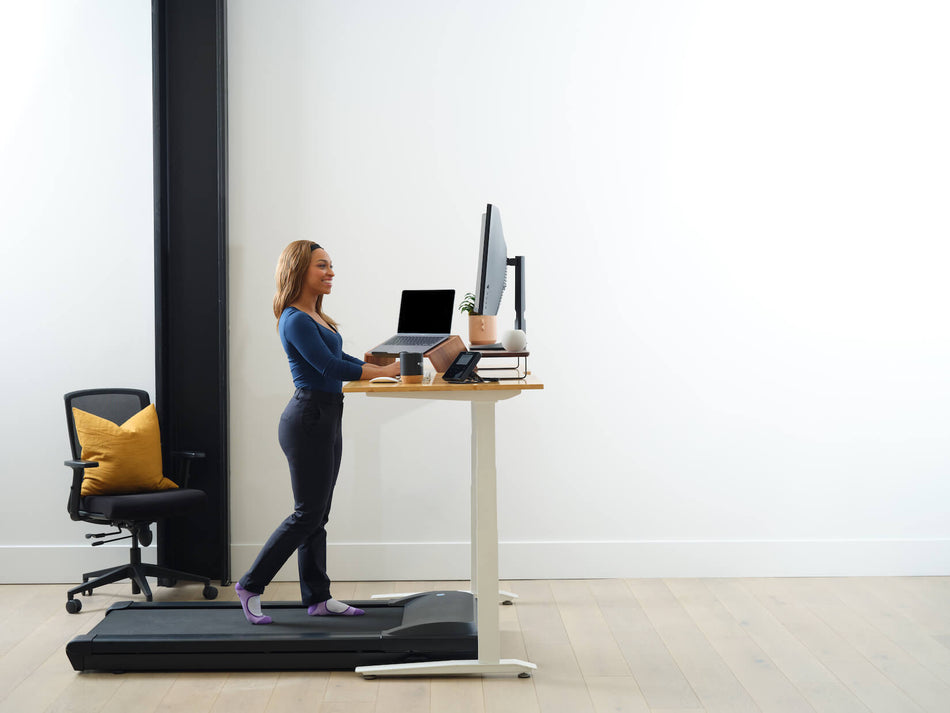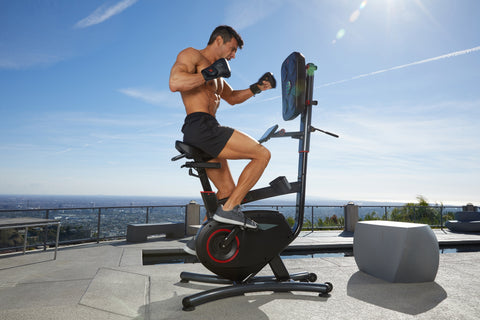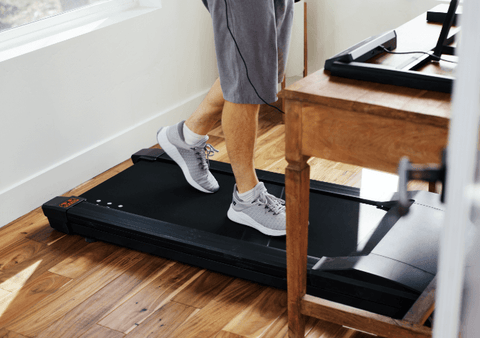Sedentary lifestyles account for 6% of global mortality. That doesn't sound like a lot until you realize that 6% of the global population roughly equates to 480 million people. That's a chilling statistic, but it's avoidable for a majority of the population. By being active and meeting the daily physical activity requirements set forth by the CDC, you can avoid the complications of living a sedentary lifestyle. Yet, the required 150 minutes of moderate exercise per week may be a tall order for those with busy schedules. One solution that applies to those who work from home or in an office is to stand or use an active workstation instead of sitting.
Active workstations provide myriad health benefits to those who use them, and they're beneficial to the employer as well since employees are more likely to show up to work feeling energized and in good spirits. The transition to an active workstation can be daunting, but it's easier than you think. With proper planning and a healthy attitude, you can become an active workstation user and be better for it.
Benefits of Switching to an Active Workstation
An active workstation, often referred to as a standing desk or sit-stand desk, is designed to promote physical activity while working. Active workstations, such as standing desks, typically include features that allow the user to alternate between sitting and standing positions. These workstations are becoming increasingly popular in office environments and among individuals who work from home, as they offer several potential benefits:
Reduced Sedentary Behavior: Sitting for prolonged periods is associated with various health risks. Active workstations help reduce sedentary time.
Improved Physical Health: Regularly standing and moving can reduce the risk of obesity, cardiovascular disease, and diabetes.
Enhanced Ergonomics: These workstations can be adjusted to meet the ergonomic needs of different individuals, reducing the risk of musculoskeletal disorders.
Increased Productivity and Concentration: Some users report enhanced focus and productivity when they alternate between sitting and standing.
Customization and Flexibility: Many active workstations come with adjustable heights and other features that can be tailored to individual preferences and tasks.
How To Transition to an Active Workstation
After years of sitting at your desk, standing for half the day or more can be hard to fathom. However, you don't have to rush into it. For some, it's better to start gradually and ease into it. Before you know it, you'll be standing at your workstation out of pure habit. Below are a few more tips to help you transition to an active workstation.
Use an Adjustable-Height Standing Desk: A desk that can easily switch between sitting and standing heights offers the most flexibility. These desks allow you to change positions throughout the day without disrupting your workflow. Look for one that adjusts easily and can be set to your specific height requirements. The standing desk from LifeSpan, for example, features a motorized frame connected to a panel, which makes it a breeze to raise or lower the desk.
Set Regular Reminders: It's easy to get absorbed in work and forget to change positions. Setting an alarm or using a reminder app can help you maintain a regular routine of sitting and standing. These reminders can prompt you to stand up, sit down, or take a brief walk.
Invest in Comfortable Footwear: Good shoes are essential when standing for long periods. They should provide proper support and cushioning to minimize foot, leg, and back discomfort. Avoid high heels or very flat shoes and opt for footwear with adequate arch support.
Use an Anti-Fatigue Mat: Standing on a hard surface for a long time can be uncomfortable. Anti-fatigue mats are designed to reduce strain on your legs and back. They provide a cushioned surface that encourages subtle movements of leg muscles, improving blood flow.
Proper Ergonomics: Ergonomic setup is crucial to prevent strain and injury. Your monitor should be at eye level to avoid neck strain. Your elbows should be at a 90-degree angle for comfortable typing. If using a laptop, consider a separate keyboard or monitor to achieve an ergonomic setup.
Incorporate Movement: An active workstation is not just about standing; it’s about movement. Moving helps in reducing muscle fatigue and improves circulation. With a treadmill desk, you can get closer to meeting your fitness goals.
Listen to Your Body: If you start feeling pain or extreme fatigue, take it as a signal to sit down and rest. It’s important to avoid overexertion and listen to your body’s cues. Over time, as you build endurance, you will be able to stand for longer periods comfortably.
Track Your Progress: Keeping a log or using a tracking app, like the LifeSpan Fit App, can help you monitor how much time you spend standing versus sitting. This not only helps in setting realistic goals but also in observing the benefits over time, such as increased energy or reduced back pain.
Stand Up for Your Health With an Active Workstation From LifeSpan
Shifting to an active workstation is a vital response to the health risks of a sedentary lifestyle. By incorporating standing or sit-stand desks into their daily routine, you can combat sedentary behavior, improve health, and enhance productivity. The transition to these workstations, with the right approach and tools, is more manageable than you think. Embracing this change can lead to profound benefits for both personal well-being and professional efficiency.
The choice to start using an active workstation starts by replacing your old desk with a new one. If you're ready to ditch your boring desk for a standing desk or treadmill desk, shop at LifeSpan. Whether you're more comfortable on a treadmill, a bike, or simply standing, we have an active workstation for everyone.







